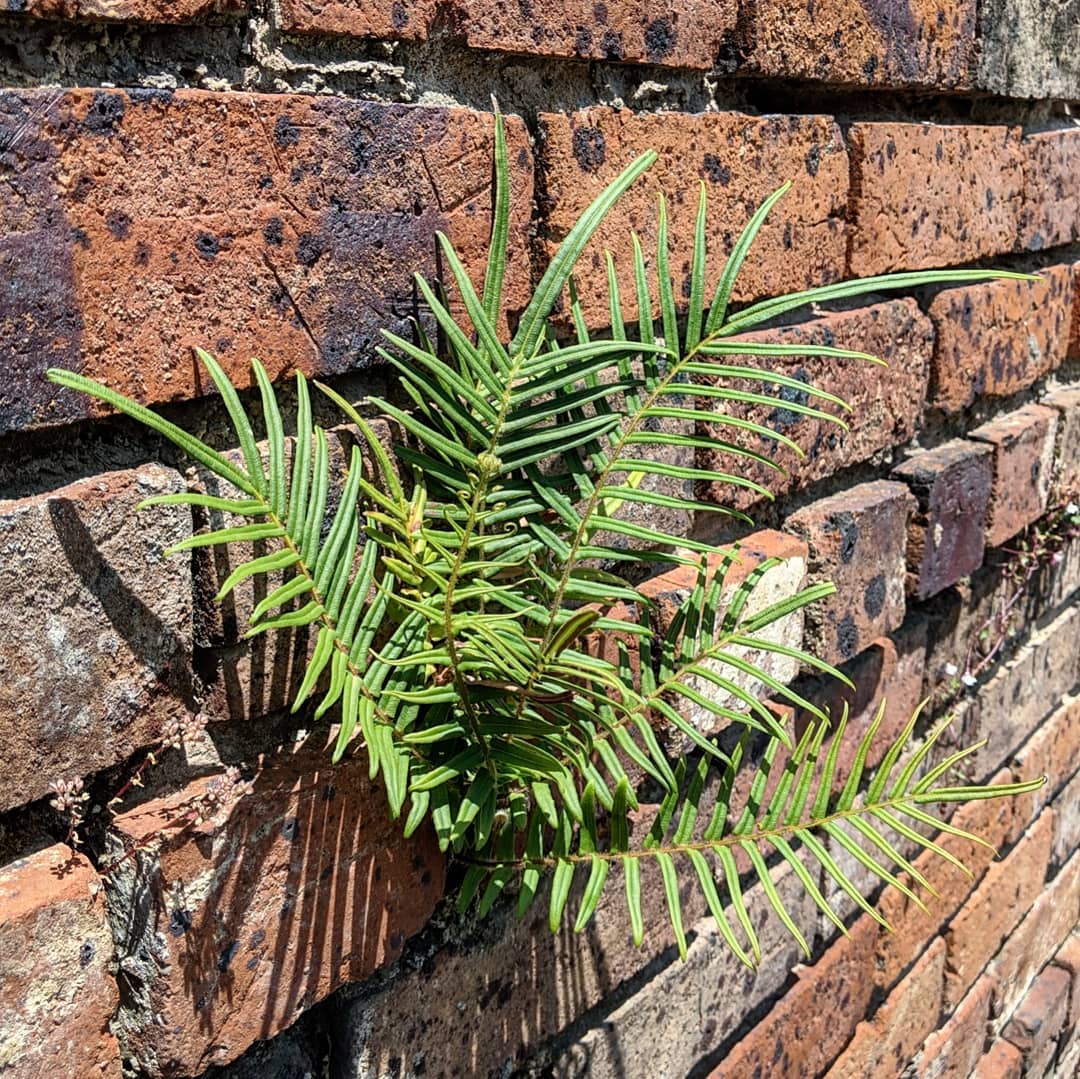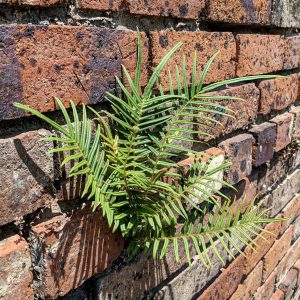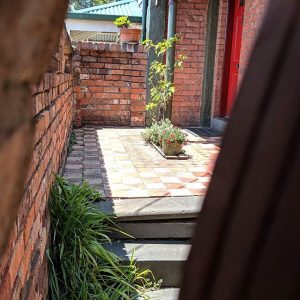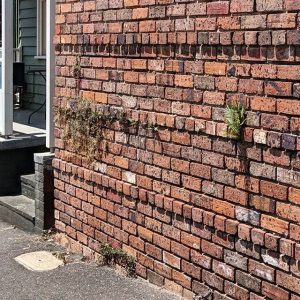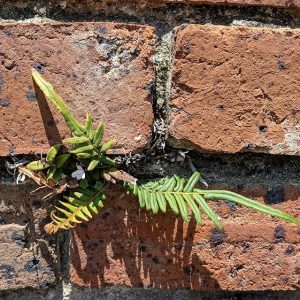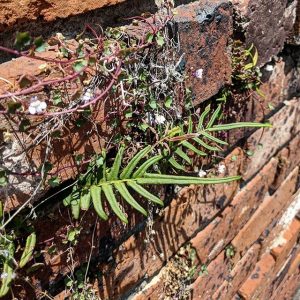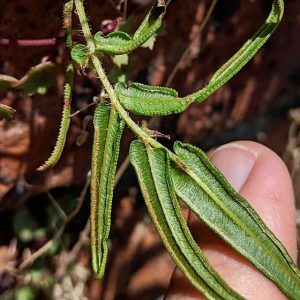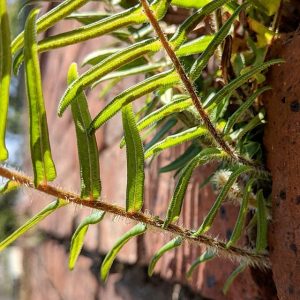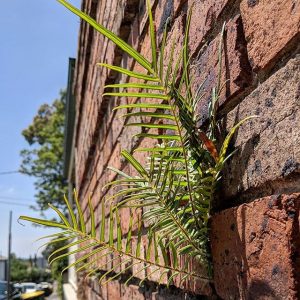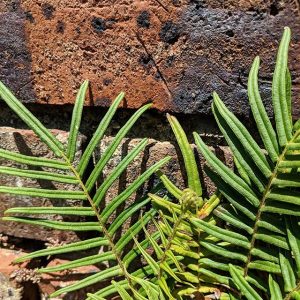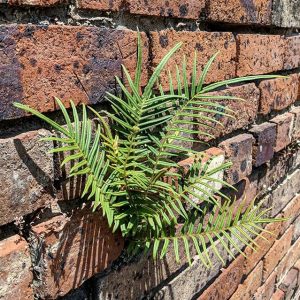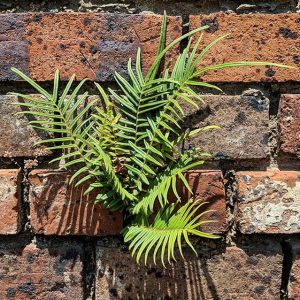Chinese or Ladder Brake (Pteris vittata), a pantropical fern and a very strange find on the north-facing brick fence to a Richmond home.
Chinese Brake is treated as indigenous to Asia, Africa, the Adriatic and Australia. Although limited to wet limestone exposures, in QLD and NSW the fern does appear to have been recorded frequently enough in environmental scenarios (including several 1860s records) to justify its treatment as indigenous in the major Australian sources. It has also been recorded at scattered natural sites in WA. In Victoria, its natural occurrence appears confined to the valleys and rocky streams of a handful of Snowy tributaries (the Murrindal, Buchan and Brodribb) in far East Gippsland. Apparent natural records in online sources for SA and for Flinders Island off Tas are from a database of National Park guidebooks and lists and appear likely to be spurious, as are similarly sourced records of the fern in other natural areas in Victoria (including the Prom, Otways, Wimmera and Glenelg).
Chinese Brake is best known in this country for its presence in Sydney and other east coast cities, where it is a frequent colonist of limestone, concrete and mortared building walls. Rather than a spontaneous extension of the disjunct indigenous populations, these urban colonies have been suspected to originate in imported specimens from overseas, a suspicion that would make a great genetic research project. Populations in the southern United States and in Central and South America are also believed to have been introduced in modern times.
Within Melbourne, Chinese Brake appears to be known formally from just 3 collections made in 1961 around the School of Botany greenhouse at Melbourne Uni. It is not common in the nursery trade here, and unfavourable local geology and building materials limit its possibilities still further. Yet here it is (?) in residential Richmond. There is no evidence the fern was planted (it is not present on the interior side of the wall (see final image); a review of streetview suggests the colony established c. 2011.
View Original Post on Instagram
Search for information about Pteris vittata in the Flora of Victoria
View information and occurrences of Pteris vittata on the Atlas of Living Australia
